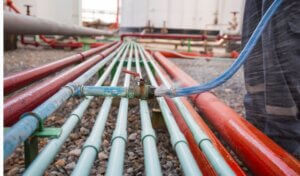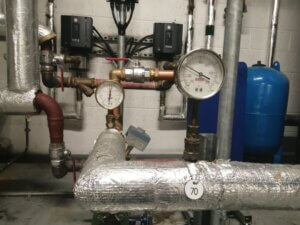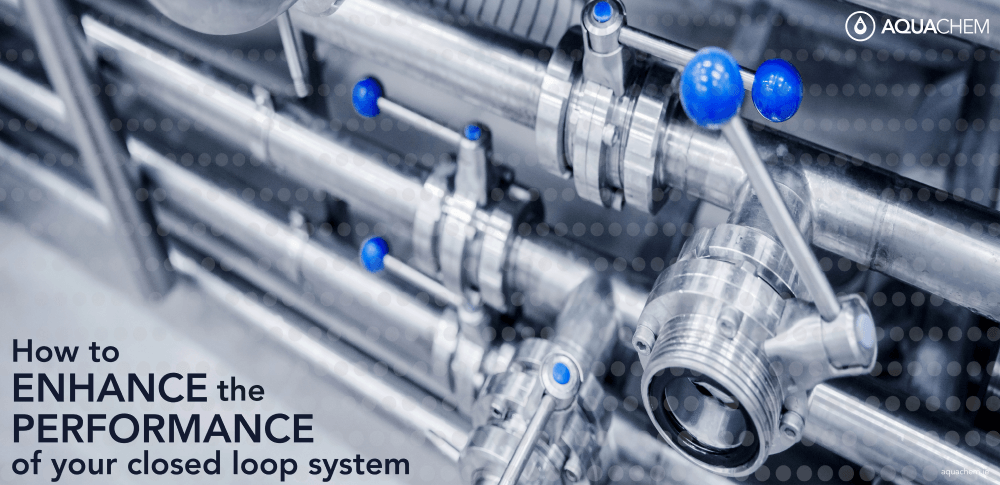Closed loop systems are an important part of facility operations as they enhance heat transfer and conserve water, and like all essential equipment it is vital that they are treated and maintained to the highest accord.
Closed loop systems are more efficient than open systems as their design keeps the water enclosed inside the system. While this means they don’t require additional water to replace that lost from evaporation, and they have a reduced chance of contamination, they are not maintenance free.
Ensuring the efficient operation of a closed-loop liquid-recirculation system requires identifying and overcoming challenges, both old and new.
The Challenges
While closed loop systems don’t have an opening to the air, it does not mean the system has complete protection from foreign matter in the water.
Reducing the contaminants and debris in the system extends the entire system’s life by lengthening the amount of time before components need replacements.

Some of the main challenges we are faced with when it comes to closed loop systems are:
Leaks
Water loss, either through leaks or intentional releases, will drain away any chemical corrosion protection and introduce fresh, oxygen rich, water.
When fresh water enters a closed system, the dissolved oxygen reacts with metals such as iron and copper, and this reaction forms iron oxide (rust) that can expand the thickness of the iron by up to 20 times.
Exposure to atmospheric oxygen
If the water in a closed system with an open tank is exposed to the atmosphere, oxygen can easily enter the system and accelerate corrosion. In addition to closed system deposit and corrosion inhibitors, adding biocides to control biological growth is advised.
Corrosion
In closed systems where the water remains stagnant for long periods of time there is an increase in corrosion. It is better to circulate the water and maintain a protective chemical concentration in all sections of a closed system.
Deposition
Corrosion deposits in one area can migrate to other areas and plug pipes, control valves and heat exchangers.
Microbiological Growth
When left unchecked, microbiological growth can quickly form a biofilm on wetted surfaces. This formation of microbial biofilms allows both aerobic and anaerobic bacteria to flourish, adversely affecting equipment performance, accelerating wood deterioration and promoting metal corrosion.
Neglecting the maintenance of a closed system also promotes the growth of sludge and deposits. The most common problem with these systems is black magnetic iron oxide mud deposits.
In addition to leaks, bacteria or minerals – deposits can reduce the ability of the system to transfer heat by coating the surfaces of the parts.
Regular care of your components through water testing and chemical maintenance prevents the corrosion of the system’s interior components.

Enhancing performance
The water in your cooling or heating system dramatically affects performance. To ensure the system is operating at optimum level you must regularly monitor and treat the water in the system. To help enhance the system you / your water treatment company should;
- Ensure that the heat-exchange properties of the system are maintained
- Make certain that the fluid used to facilitate heat transfer reacts well with the system’s metallurgy to prevent corrosion
- Ensure contaminants in the fluid do not lay out on the heat-transfer surfaces, which will prevent them from providing proper heat transfer
- Ensure that particulates that can damage the internals of the system or foul/plug the system are kept out of the system
- Keep biological growth under control to prevent fouling and corrosion
__________________________________________________________________________________________
Generally, demineralized water is used for closed-loop cooling water makeup, but chemical treatments are required to prevent corrosion and the other issues which can arise in the system.
Proper closed loop water treatment should begin before the new system starts up for the first time.
Once the closed loop system begins operation, you will not see the any signs of corrosion until it’s too late and the system shows signs of failure. That’s why most water treatment services aim to prevent corrosion, scale and other microbiological growth.
Before adding water treatment, on-site personnel should flush the closed loop to prevent bacteria from colonizing on the iron surfaces.
The use of water treatment chemicals in closed loop systems will help prevent corrosion in numerous ways. The proper chemical treatment can:
- Target dissolved solids within the system to create less aggressive water
- Maintain the pH level in the water so that it’s within the noncorrosive range
- Adjust the pH level to assist with problems resulting from iron
- Remove oxygen from the water to slow the spread of metal corrosion.
- Form protective films on metallic surfaces and passivate them.
Microbiological Growth
The control of biological agents, like bacteria and algae, is vital to any effective cooling water treatment. Biocides make it possible to control such factors, with two classes of biocides available:
It is crucial to control bacterial levels in closed water systems from the point of the first fill.
Flushing and chemical pre-treatment, again, are necessary to keep bacteria, algae and fungi from proliferating on pipe surfaces.
Selecting appropriate feed and filtration equipment helps processors overcome critical challenges inherent in the operation of closed-loop heating and cooling-water systems.
In a system without any leaks, as long as water monitoring and treatment occur regularly, this scheduling should suffice to minimize pollutants. If you neglect the system too long, it can develop leaks which make it harder to maintain.
Contact us today to see how we can help you with your water treatment.







